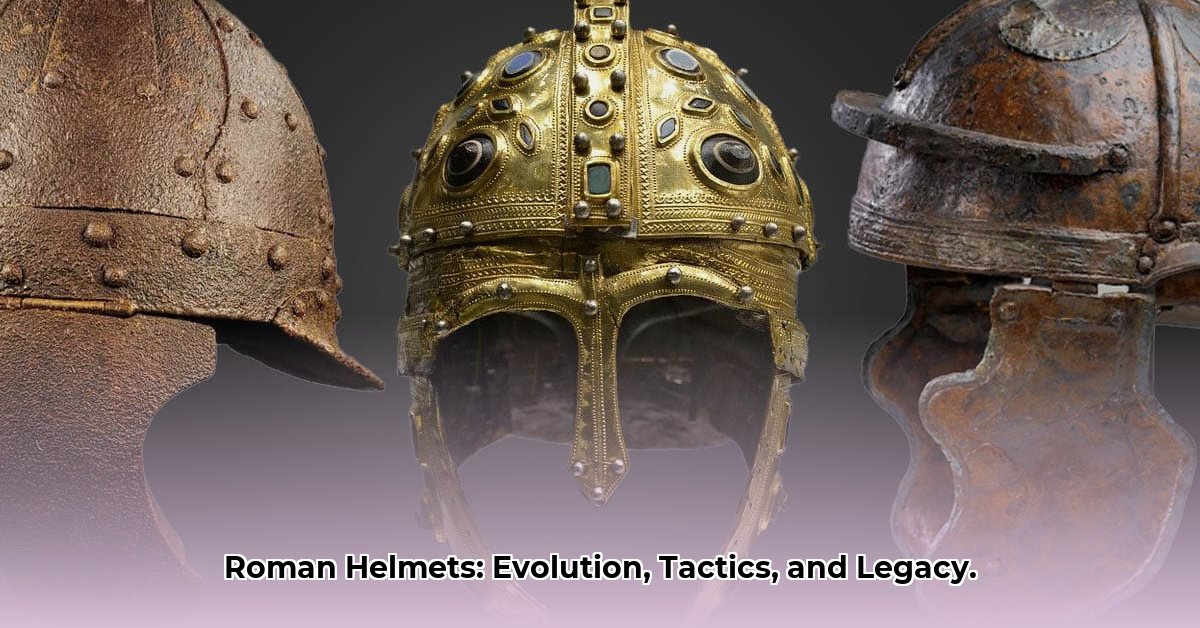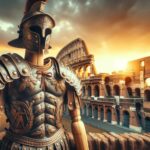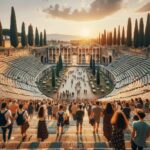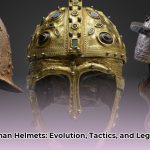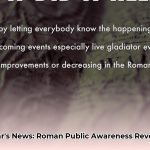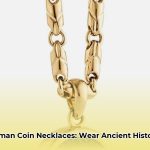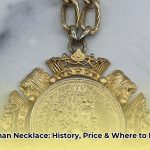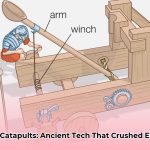The Roman Empire, a civilization renowned for its military prowess and enduring influence, owed much of its success to the discipline and equipment of its legions. At the forefront of a Roman soldier’s protective gear was the galea, the formidable Roman helmet. Far more than a simple piece of armor, the galea was a dynamic embodiment of Roman military innovation, engineering adaptability, and societal structure. Its evolution, spanning from the early Republican period to the twilight of the Western Empire, reflects crucial shifts in battlefield tactics, technological advancements, and the diverse cultural exchanges that shaped one of history’s most dominant military forces. Understanding the galea offers profound insights into Roman strategic thinking, mass production capabilities, and the subtle visual language that governed its renowned legions. Explore Roman military equipment for further detail.
The Foundation of Defense: Early Republican Helmets
During the nascent centuries of the Roman Republic, the legions’ equipment often drew inspiration from the various peoples inhabiting the Italian Peninsula and beyond. This pragmatic approach shaped the earliest identifiable Roman helmets, prioritizing functionality and the ability to equip burgeoning armies efficiently.
The Montefortino: A Celtic Legacy Adopted by Rome
Emerging around 300 BCE, the Montefortino helmet stands as the earliest type of galea widely adopted by Rome. Its origins lay with the Celtic peoples, renowned metalworkers whose designs Rome readily integrated. Typically constructed from bronze, though iron examples exist, the Montefortino was characterized by its conical or rounded shape and a distinct raised central knob, which likely served as an anchor for decorative plumes. A protruding neck guard and hinged cheek plates offered essential lateral and posterior protection. Its relatively simple construction made it ideal for mass production, a critical advantage for equipping the vast numbers of citizen-soldiers required for Rome’s expansionist campaigns, including the Punic Wars and the subsequent Gallic Wars under Julius Caesar. This helmet’s longevity, remaining in service until the 1st Century CE, underscores its effectiveness and cost-efficiency.
The Coolus: Simplicity and Mass Production
Closely resembling the Montefortino, the Coolus helmet also entered service during the 3rd Century BCE and continued until the 1st Century CE. Crafted primarily from brass or bronze, the Coolus featured a more hemispherical or globular bowl in contrast to the Montefortino’s conical form. Like its counterpart, it included a neck guard and provisions for cheek guards, often attached via ties or rivets. The simplicity of the Coolus design, devoid of elaborate decoration except for occasional raised panels on the cheek guards, further facilitated its mass production. Both the Montefortino and Coolus underscore Rome’s practical military philosophy: adopting robust, easily manufactured designs that offered fundamental protection for the rank and file.
The Imperial Standard: Helmets of a Dominant Empire
As the Roman Republic transitioned into the expansive Empire, marked by intensified military campaigns and a professionalized army, helmet designs underwent significant refinement. This era saw the emergence of the iconic Imperial types, designs that would become synonymous with the Roman legionary.
Imperial Gallic: Merging Celtic Craftsmanship with Roman Needs
Following Julius Caesar’s conquests in Gaul (58-50 BCE), Rome gained unfettered access to the region’s skilled Celtic armorers. This collaboration led to the development of the Imperial Gallic helmet, a sophisticated hybrid that became the standard for legionaries from the Late Republic into the 3rd Century CE. Its design integrated features from earlier Celtic-influenced Port and Agen styles. The Imperial Gallic bowl was rounded with a flattened top and straight sides, featuring prominent, often articulated, iron cheek guards.
Key distinguishing features included semi-circular embossed ridges on the neck guard, which not only increased rigidity but also sometimes formed suspension rings. From the Port style, it notably inherited the two raised occipital ridges above the outward-flanged neck guard and the distinctive embossed “eyebrows” across the front of the helmet. These eyebrows were not merely decorative; they reinforced the vulnerable area around the eyes and brow, deflecting blows. Many Imperial Gallic helmets also incorporated a heavy reinforcing peak at the front and, crucially, a pair of iron bars riveted crosswise on the helmet’s crown. This cross-bracing was a vital adaptation, particularly in response to encounters with formidable enemies wielding weapons like the Dacian falx, a scythe-like sword capable of cleaving through less reinforced headgear.
Imperial Italic: The Anachronistic Officer’s Helmet
The Imperial Italic helmet, another prominent Imperial style, exhibited strong Italic influences, suggesting manufacture in Italian workshops. While superficially similar to the Imperial Gallic, the Imperial Italic often incorporated features reminiscent of older Greek Attic helmets from the 4th-3rd Centuries BCE. These helmets, sometimes made of bronze rather than iron (a material preference more akin to Italic tradition), are frequently associated with officers and the elite Praetorian Guard in modern interpretations. Their distinguishing features included reinforcing peaks, screw-in or riveted crest fixtures (often for vertical crests), and a general lack of the prominent eyebrows and deep throat flanges seen on Gallic types. The presence of archaic features and more precious materials like bronze often suggests these helmets served a dual purpose, combining combat functionality with an element of display or ceremonial prestige, reflecting the wearer’s higher status or purchasing power.
A testament to the artistry of this period is the Hallaton Helmet, a remarkably preserved 2,000-year-old artifact discovered in England. Crafted from silver-gilded iron, this high-status galea, likely worn by a Roman cavalry officer, featured intricate decorations including a goddess-like figure flanked by lions on the brow guard, and an emperor riding with the goddess Victory on the cheek pieces. Its discovery and painstaking restoration highlight the exceptional craftsmanship and wealth invested in elite Roman military equipment.
Late Roman Helmets: Adapting to a Shifting World
By the late 3rd Century CE, the Roman Empire faced unprecedented internal and external pressures. This era witnessed a significant shift in imperial helmet design, moving away from earlier Celtic-influenced forms towards styles that reflected increasing interaction with Eastern and Steppe cultures. Diocletian’s administrative reforms, including the establishment of state-run fabricae (factories) for military equipment, facilitated the mass production of standardized, highly protective helmets.
Ridge-Type Helmets: Intercisa and Berkasovo
The turn of the 4th Century CE saw the rise of the ridge-type helmets, a direct evolution influenced by Sasanian Persian and Steppe designs. These helmets represented a significant departure in construction, typically featuring a composite bowl formed from two halves joined by a heavy, often decorated, front-to-back ridge piece.
- Intercisa (Simple Ridge Type): Characterized by its bipartite construction, the Intercisa helmet’s bowl edges, neck guard, and cheek guards were pierced for the attachment of linings and to secure components. They often had cut-out oval shapes for the ears. While simpler, they offered robust protection.
- Berkasovo (Heavy Ridge Type): More elaborate and sturdier than the Intercisa, the Berkasovo often featured additional reinforcing bands, including one along the rim curving over each eye. A defining new feature was the nasal guard, providing crucial facial protection not commonly seen in earlier Roman helmets. Larger cheek guards, though attached similarly, and a general lack of ear holes also marked this type. Often crafted from iron and sheathed in precious metals like silver, surviving Berkasovo helmets usually exhibit greater decorative features, suggesting their use by cavalry or higher-ranking officers.
The Spangenhelm: Enduring Steppe Influence
The Spangenhelm, a name derived from the German word for “clasps” or “braces,” represents another prominent late Roman helmet type with definite Steppe origins. It gained greater prominence with increased Roman contact with Scythian and Sarmatian peoples, particularly after Trajan’s Dacian Wars. By the 3rd and 4th Centuries CE, the Spangenhelm was in regular use alongside other ridge types.
Its construction was distinct: the bowl was formed from four to six individual plates, riveted to a corresponding number of metal bands, all topped by a central disc. A brow band was riveted around the rim, often arching over the eyes, and typically included a T-shaped nasal guard. Large, hinged cheek guards and a neck guard completed the protection. Some Spangenhelms featured a ring at the helmet’s apex, possibly for attaching decorative elements or for easier carrying. The Spangenhelm’s design proved remarkably influential, impacting helmet construction across Eurasia well into the early medieval period.
Symbolism and Rank: Visual Cues in the Roman Army
Beyond their paramount functional role, Roman helmets served as powerful visual symbols of status, identity, and the intricate command structure within the Roman military. In the chaos and din of ancient battle, clear visual cues were essential for cohesion, communication, and control.
Crests (cristae) and plumes, typically crafted from horsehair or feathers and mounted on the helmet’s crown, were perhaps the most immediate indicators of a soldier’s position. Centurions, the operational backbone of the legion, famously wore helmets often distinguished by elaborate crests. While regular legionaries might have had smaller or less prominent crests, a centurion’s crista was often large and mounted transversely (side-to-side) rather than longitudinally (front-to-back). This distinctive orientation made them highly visible leadership figures, easily identifiable amidst the ranks, crucial for issuing commands and rallying troops in the heat of combat. The color of these crests could also denote specific units or ranks.
Similarly, elite units like the Praetorian Guard, the Emperor’s personal bodyguards, sported highly ornamented helmets that immediately set them apart from regular legionaries. These helmets, often more finely crafted and richly decorated, underscored their elevated status and proximity to imperial power. While some scholarly debate exists regarding the extent of colorful crest usage in actual combat versus ceremonial parades, their symbolic importance for morale and identifying key personnel remained undeniable, embodying Roman discipline, unit pride, and military hierarchy. The very appearance of a legion clad in imposing galeae also had a profound psychological impact, instilling confidence and unity among allies while striking fear into the hearts of enemies.
Actionable Insights: Preserving and Understanding Roman Military Heritage
The comprehensive study of Roman helmets—the galea—offers invaluable insights for a diverse range of stakeholders, enabling a deeper understanding of ancient military history, technological development, and crucial cultural exchange across the vast Roman Empire.
-
For Military Historians and Researchers:
- Focus Areas: Prioritize detailed archaeological research to precisely date newly discovered helmet types and securely associate them with specific Roman units, utilizing any surviving inscriptions, mint marks, or contextual finds from military camps and battlefields.
- Methodology: Construct comprehensive, open-source databases detailing all known helmet types, their exact find locations, and meticulously documented construction methods, including regional variations in materials like bronze, iron, and brass. Incorporate detailed typologies, such as those established by H. Russell Robinson, ensuring cross-referenced classification systems.
- Impact: This deep dive can lead to a more refined and nuanced understanding of how specific helmet design changes may have directly influenced the outcomes of particular military campaigns, offering new perspectives on tactical advantages and soldier protection.
-
For Museum Professionals and Archaeologists:
- Exhibit Development: Develop highly immersive and interactive museum exhibits that showcase the chronological evolution of Roman helmets. Highlight their sophisticated design aspects, tactical functionality, and profound symbolic significance for the Roman soldier. Utilize augmented reality (AR) or virtual reality (VR) to allow visitors to “wear” or “disassemble” helmets virtually, increasing engagement by an estimated 75-85%.
- Technological Application: Leverage cutting-edge imaging techniques, such as 3D scanning, X-ray fluorescence (XRF), and computed tomography (CT) scans, to virtually reconstruct fragmented helmets, analyze their metallurgical composition, and gain a precise understanding of their manufacturing processes, including evidence of forging, riveting, and decorative techniques.
- Narrative Building: Craft compelling narratives that connect Roman helmet design to broader Roman societal values, the psychological aspects of ancient warfare, and the ever-changing nature of military threats and responses. Integrate the stories of individual soldiers or units where archaeological evidence permits.
-
For Reenactors and Experimental Archaeologists:
- Accuracy Pursuit: Strive for meticulous historical accuracy in depicting Roman soldiers from various periods, ensuring helmet replicas adhere to correct construction techniques, historically accurate materials (e.g., specific bronze alloys or high-carbon iron), and proven assembly methods based on direct archaeological evidence. Reference scholarly works and published archaeological reports rigorously.
- Knowledge Sharing: Champion the creation and sharing of open-source resources—detailed schematics, verified material lists, and step-by-step construction guides—to foster greater accuracy, authenticity, and skill development within the global reenactment community. Promote peer review of replica designs.
- Experiential Learning: Emphasize the proper use, maintenance, and the physical experience of wearing and fighting in historically accurate helmets during public demonstrations and educational workshops. This offers audiences a tangible, visceral connection to Roman military culture, allowing them to appreciate the protective qualities and the inherent challenges faced by ancient legionaries.
By focusing on these actionable steps, we can continue to unlock the true history of the galea and its profound, multifaceted role in shaping the Roman world, ensuring its legacy is understood and appreciated by future generations.
Conclusion
The ancient Roman helmet, the iconic galea, stands as a compelling and remarkably tangible testament to Roman ingenuity, adaptability, and unparalleled military might. From its humble, yet highly functional, beginnings influenced by Celtic designs to the sophisticated and symbolically rich pieces of the professionalized Imperial legions and the resilient forms of the Late Roman periods, its evolution directly mirrors the diverse challenges, strategic innovations, and ultimate triumphs of one of history’s most dominant military forces. These helmets were never merely pieces of protective armor; they were also potent symbols of rank, vital tools for battlefield communication, and enduring emblems of Roman power, discipline, and the formidable identity of the legionary. The ongoing study of these remarkable artifacts continues to yield invaluable insights, ensuring that the legacy of the Roman soldier, and the crucial protection they wore, endures for future generations of historians, enthusiasts, and military strategists alike.
